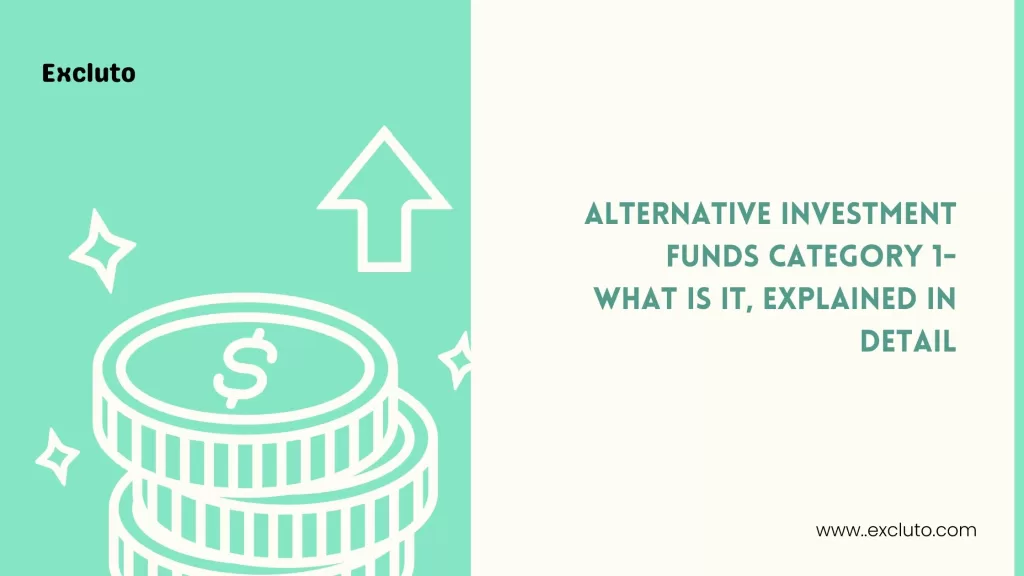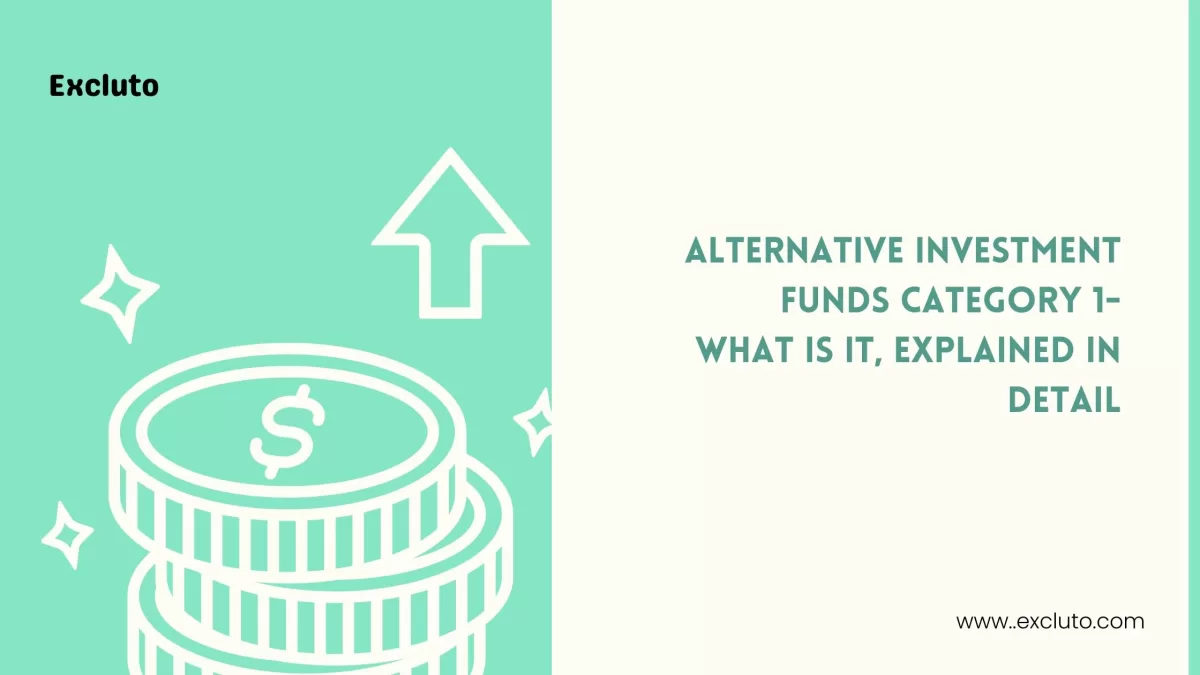In today’s dynamic investment landscape, High Net Worth Individuals (HNIs) are constantly seeking avenues to optimize their wealth creation strategies. One such avenue that has emerged as a beacon of opportunity is Alternative Investment Fund (AIFs).

Among the various categories of AIFs, Category 1 holds a special allure, offering a blend of regulatory oversight, lower risk profile, and attractive investment opportunities.
Let’s embark on a journey to demystify AIFs and delve deep into the realm of Category 1 investments.
Understanding Alternative Investment Fund (AIFs):
Alternative Investment Funds (AIFs) represent a distinct class of investment vehicles that diverge from traditional asset classes like stocks, bonds, and cash.
These funds pool capital from investors and deploy it across a spectrum of alternative investment strategies, including private equity, hedge funds, venture capital, and more.
AIFs provide sophisticated investors, including HNIs, access to diversified investment opportunities beyond conventional markets.
Exploring Alternative Investment Fund Category 1:
AIFs Category 1, often referred to as ‘Social Venture Funds,’ ‘Angel Funds,’ or ‘Impact Funds,’ are designed to promote entrepreneurship, innovation, and economic growth while offering potential for attractive returns.
Let’s delve deeper into the key aspects that define Category 1 investments:
- Regulatory Framework:
- AIFs Category 1 are regulated by SEBI, ensuring transparency, investor protection, and adherence to best practices.
- SEBI imposes stringent eligibility criteria and operational guidelines to maintain the integrity and credibility of Category 1 funds.
- Investment Strategy:
- Category 1 funds focus on investing in start-ups, early-stage ventures, SMEs, and infrastructure projects with the potential for significant growth and societal impact.
- These funds play a pivotal role in nurturing innovation, supporting budding entrepreneurs, and fostering job creation.
- Risk Profile:
- Compared to other categories of AIFs, Category 1 exhibits a lower risk profile, as investments are directed towards companies with established business models or projects with steady cash flows.
- However, investors should be cognizant of the inherent risks associated with investing in early-stage ventures and infrastructure projects, including market volatility and execution risks.
- Minimum Investment Threshold:
- The minimum investment limit is Rs. 1 crore for investors, whereas the minimum investment amount for directors, employees, and fund managers is Rs. 25 lakh.
- AIFs come with a minimum lock-in period of three years.
- This ensures that investors have a significant stake in the fund, aligning their interests with the fund manager’s objectives.
- Impact Investing:
- AIFs Category 1 offer HNIs an opportunity to engage in impact investing, where financial returns are aligned with positive social and environmental outcomes.
- By supporting innovative ventures and infrastructure projects, investors can contribute to job creation, economic development, and sustainable growth.
Pros and Cons of investing in AIF Category 1:
| Pros | Cons |
| 1. Diversification: AIF Category 1 offers exposure to alternative asset classes, enhancing portfolio diversification. | 1. Higher Minimum Investments: AIF Category 1 typically requires larger initial investments, limiting accessibility. |
| 2. Potential for Higher Returns: AIF Category 1 provides potential for attractive long-term returns. | 2. Illiquidity: Investments have longer lock-in periods, reducing liquidity. |
| 3. Professional Management: Managed by experienced professionals, offering active risk management. | 3. Market Volatility: Investments may be subject to market fluctuations. |
| 4. Regulatory Oversight: AIF Category 1 operates within a regulated framework, ensuring transparency and investor protection. | 4. Regulatory Risks: Regulatory changes or compliance issues may pose risks. |
| 5. Impact Investing: Supports innovation and economic development, generating societal impact. | 5. Limited Transparency: May have limited transparency compared to traditional investments. |
HNIs should consider these factors carefully before investing in AIF Category 1, aligning their decisions with their financial goals and risk tolerance. Seeking professional advice is advisable to make informed investment choices.
Conclusion:
In conclusion, Alternative Investment Funds Category 1 offer HNIs a unique opportunity to diversify their investment portfolios, support entrepreneurship, and drive positive societal impact.
With regulatory oversight, professional management, and a focus on sustainable growth, Category 1 investments represent a compelling avenue for sophisticated investors seeking to generate attractive returns while making a difference in the world.
At Excluto, we are exploring Venture Capital as an asset class for investors. At our platform, we connect VCs with LPs, legally & confidentially.
Cumulative net figures as at the end of December 31, 2023 (In India)
| (All figures in Rs. Crores) | |||
| Category of AIF | Commitments Raised | Funds Raised | Investments Made |
| Category I | |||
| Infrastructure Fund | 18,738.08 | 8,380.28 | 5,469.33 |
| Social Venture Fund | 1,419.93 | 641.03 | 258.43 |
| Venture Capital Fund | 52,057.17 | 29,488.41 | 36,935.42 |
| SME Fund | 1,158.22 | 671.78 | 597.45 |
| Special Situation Fund | 228.00 | 225.35 | 225.35 |
| Category I Total | 73,601.40 | 39,406.84 | 43,485.98 |
| Category II | 8,83,215.62 | 3,08,471.96 | 2,67,911.24 |
| Category III | 1,28,058.26 | 81,676.42 | 88,255.97 |
| Grand Total | 10,84,875.28 | 4,29,555.22 | 3,99,653.19 |
Source – https://www.sebi.gov.in/statistics/1392982252002.html

